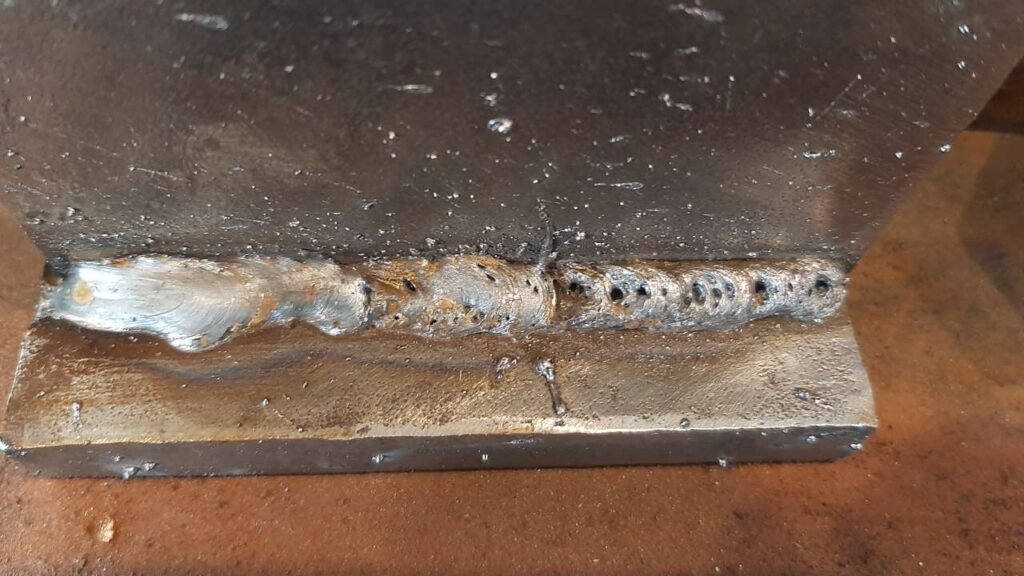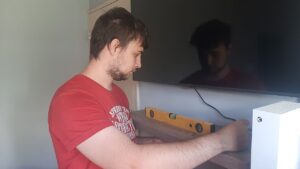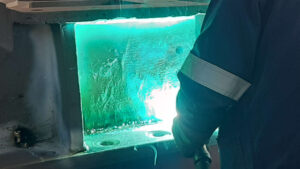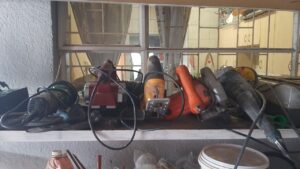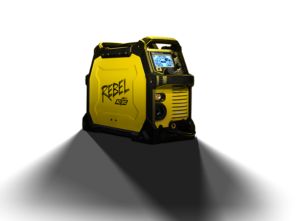What is porosity
In the most basic terms, porosity is a welding defect referring to holes formed in a weld. You will clearly notice porosity after you have welded not while you are welding. This is because oxygen and nitrogen have mixed with your weld and want to escape while your welding bead is still molten and resulting in hole/pores being formed in the final weld.
Once you stopped you will notice some bubbling while the weld is still red hot. After it has cooled you can see holes that have been formed in the weld. This is usually clear and on a surface level, but can be deeper.
What are the leading causes of porosity?
There are a few causes of porosity but the leading cause is the lack of shielding gas to sufficiently protect your weld bead. Another cause you can run into is contaminated base metals.
Insufficient shielding gas
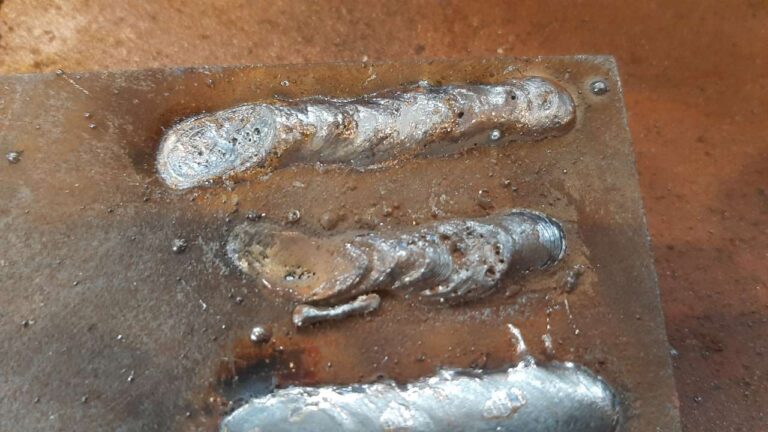
Shielding gas is used to protect your weld pool from contamination from the atmosphere. So if you don’t have a shielding gas you will get porosity with 100% certainty.
What can cause insufficient shielding gas
- Insufficient flow from the gas regulator
- Wind blowing the gas away
- Blocked or broken gas hoses
- Keeping nozzle too far from the weld pool
Contaminated base metal
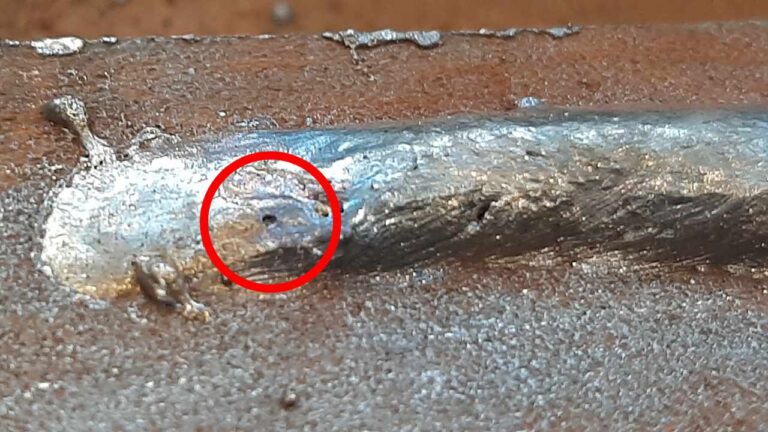
Contaminated base metals can cause porosity due to the same reason when the atmosphere mixes with your weld pool. The contaminant boils and wants to escape the weld pool forming the porosity.
What are the contaminants?
Anything other than the clear base metal can be considered a contaminant and should be cleaned off before welding. Here are some most common contaminants.
- Scale
- Slag
- Paint
- Oil
- Grease
- Rust
- Water
Note: Having these contaminants on your base metals won’t necessarily cause porosity, but it is good welding practice to clean them off before any sort of weld is started.
How do you prevent porosity in welding?
To prevent porosity in welding you first need to know what is the causes of porosity. The causes as stated above are lack of shielding gas or contaminants on the base metal. Once you know the cause you can rectify them.
- Check that there’s a sufficient gas flow
- Make sure your metal is prepped for welding
Do a quick test
I recommend you do a quick test before you start to weld after changing settings or after not welding for a while, even if you never changed any settings. Run a quick bead on a piece of scrap metal and see if there’s any sort of porosity. You will even recognize other defects when doing a test.
Is porosity good in welding?
Porosity isn’t a good thing in welding at all. It weakens your weld and compromises the strength of your weld. Even if there’s a single pore in your weld bead it is compromised and should be redone.
Why a single pore is bad for a weld
You might be wondering now why will one single pore in a weld bead be such a problem that it needs to be fixed. The phrase “a chain is only as strong as its weakest link” also applies here because a weld is only as strong as its weakest point.
A crack can easily be formed at the pore and a small crack can then turn into a large one. In the end, your whole weld can crack in half and fail at a critical point.
How to fix porosity
Fixing porosity can be simple or difficult this all depends on the situation. There’s most likely one of two situations you can find yourself in and it will either be a massive collection of multiple pores or just one singular pore.
Fixing a single pore
When you are faced with a single pore just simply tack over it and it should be enough for most situations. On very critical work you will have to grind it out and reweld, but this is most likely only pressure vessels or lifting points.
Fixing a lot of porosity
There’s only one way you will be able to fix porosity and that’s by grinding out the whole weld with the porosity and rectifying what caused the porosity in the first place then redo the weld.
If you are unable to grind the weld you can try to weld over it but this most likely won’t work. The best way is to split the weld by using an angle grinder or a cutting torch. After splitting you will have to remove the weld and redo the weld.
Conclusion
Porosity isn’t that big of a deal but is a common problem you can face when MIG welding so it is something to be aware of and know how to deal with.
There’s a great section in the ESAB handbook on porosity with a bit more information you can go and check out some additional information. You can also go check out their Amazon store to see what they are about.

